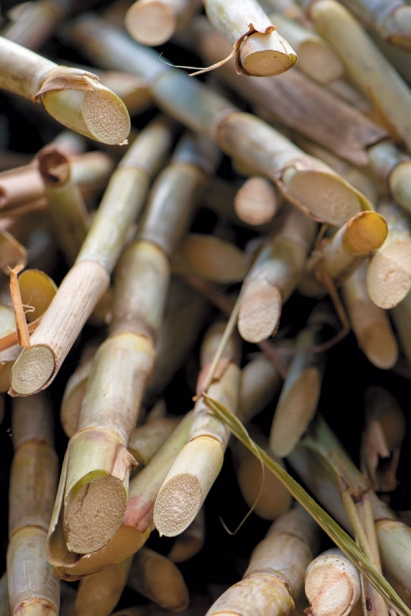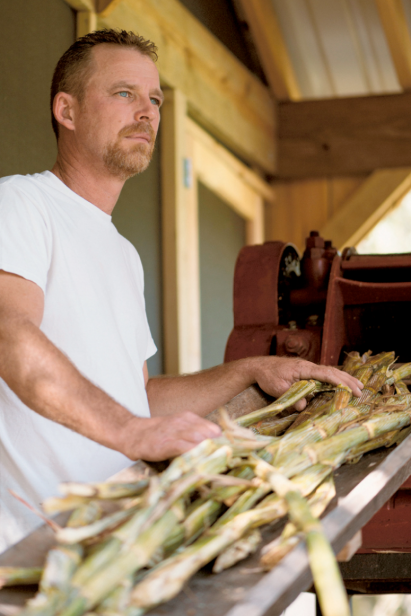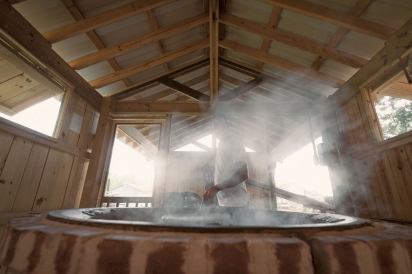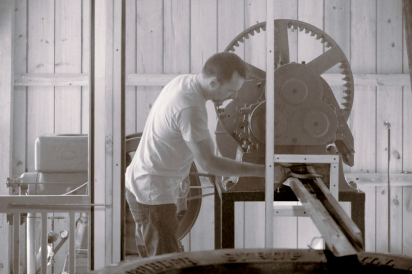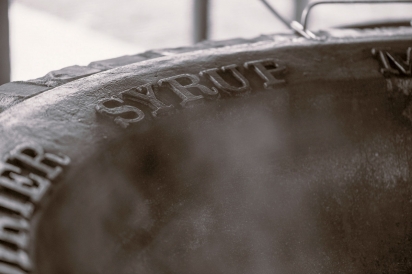Crafting Cane: Charles Poirier’s Pure Cane Syrup
I had been living in New Orleans for three months when I first heard about the syrup.
I was invited to a friend’s potluck supper, along with six others, and as we took our seats to begin dinner, our host placed a stout glass bottle, about halfway filled with a viscous amber-colored liquid, in the center of the table. A hush fell over the group and someone asked softly, “Is that the syrup?”
It was carefully drizzled onto steaming cornbread sprinkled with a touch of sea salt; not a drop more than needed, no over-enthusiastic pouring. One bite of syrup-soaked cornbread later and I discovered why there had been a touch of reverence in that question. Two hours later, during my 10-block walk home, I greedily guzzled the five ounces of syrup I managed to wrangle from our host under the pretense of “product testing.”
When my brother and I were young and we visited my grandmother on her farm 30 miles outside of Port-au-Prince, Haiti, she would wrap a bandana around her left hand, grab the handle of her freshly sharpened and well-worn machete and disappear into the sugarcane patch that she’d been growing since before my mother was born. She protected her face using her wrapped left hand to clear away the long green leaves hanging wildly from the tall stalks of cane; a slice from those leaves felt like a thousand paper cuts.
A few minutes later, she would reappear with a bundle of freshly cut stalks. She would hand us each one, and, using our teeth, we would pull away the hard outer skin to get to the fibrous meat inside, which we would suck on until there wasn’t an ounce of juice left. Growing up Haitian means that I cut my teeth on sugarcane, but I knew nothing of cane syrup.
Just a few weeks after that dinner, I left New Orleans before dawn on a Saturday to drive to Youngsville, Louisiana, just outside of Lafayette, to spend the day with Charles Poirier, the man behind the legendary syrup. This was to be his first day of “cooking” for the season, and the day began early.
Minutes after I arrived, Charles and I walked into his sugar house—“a labor of love,” as he calls it—built just eight months after back surgery repaired two ruptured discs. The sugar house stands behind the house where he lives with his wife, Jessica, and their two daughters, Kelcie and Peyton. Its 384 square feet of open space contains a sink, a couple of wooden shelves, a small antique stove, two 15-gallon stainless steel tanks, a variety of strainers hanging on wall pegs and a 60-gallon cast iron kettle— the vessel into which the pressed sugarcane juice pours and is then boiled to a temperature of 226°F. Overlooking these simple tools is a 108-year-old mill, powered by an 83-year-old motor, both restored by Charles.
“The first time I saw someone making syrup was about 13 years ago. I was with my dad and we saw this older gentleman making it and I remember looking at the sticky mess and thinking it looks good,” he said laughing, “and that’s when my dad told me that my great-great-grandfather used to make syrup. So I thought I’d look for a mill and try it.”
Following in those ancestral footsteps, Charles decided to revive the traditional, time-intensive art of making authentic cane syrup; that is, slowly. Simply put, fresh-pressed sugarcane juice is boiled in a kettle over an open fire, and slowly reduced to a thick syrup. Poirier’s only concession to “modern technology” is using bottled propane instead of a wood-fueled fire as his great-greatgrandfather had. But much like in the past, nothing is wasted. The mashed cane is meal for a friend’s cows, and the runoff liquid skimmed during the cooking process is composted.
We walk around the room, and as Charles describes the use of each tool you quickly realize that though he might be the face of cane syrup in this part of Acadiana, the antique mill is the heart of the operation. Without the mill there is no syrup. It took him two years of searching to find it a mere five miles from his house, abandoned under an oak tree with thick branches growing through it. An eight-year search delivered the motor, three miles away, covered in a thick layer of dirt and minutes away from being donated to a local scrap yard.
At three months long, Poirier’s season is short but the work is difficult. First, the sugar cane must be planted and cultivated. Combinations of letters and numbers like POJ 290, HOCP 00- 950 and 226 might not mean much to you and me, but to Charles they mean a distinct flavor difference between each batch of his much-lauded syrup. One 14-gallon batch of bottled syrup requires 500 stalks of sugar cane, which take him about seven hours to strip of leaves and cut. The stalks pass through the mill and yield a 60-gallon batch of juice, which is filtered into the kettle, boiled to 226°F, and reduced to sweet, rich syrup.
Cutting cane by hand is backbreaking work. Feeding the mill requires precision and caution, and once the cane juice has been extracted and has filled the kettle, skimming every 20 minutes as juice boils and bubbles takes patience and constant attention, as you wait seven hours for the liquid to evaporate and reach its goal temperature and viscous consistency. For Poirier’s oneman operation, cooking a batch of cane syrup takes 12–15 hours from beginning to end, not counting the planting of the cane or the bottling of the syrup.
Last season, Charles repeated this process 13 times, and this year he’ll increase it to 18. When I tell him that I’ve not been able to find any cane syrup in stores and ask him who else in the area has it, he smiles and says, “I don’t know, but I have it.”
At the end of the day, after shadowing his every step, I asked Charles one final question, “What’s your favorite part of doing this?” The answer came quickly: “Smelling the syrup. It’s the best feeling in the world. It brings me back to a place I’ve never been before, if that makes any sense. It’s a special moment. That, and I love good syrup.”



